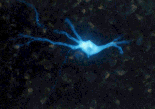| Sponsored by Wake Forest University School of Medicine and National Families in Action | |||
| Glossary - T | |||
| This glossary comes from False Messengers: How Addictive Drugs Change the Brain, by David Friedman, PhD, and Sue Rusche, Harwood Academic Publishers, Amsterdam, The Netherlands, 1999. A
| B | C
| D | E
| F | G
| H | I
|
|
|||
| T Tetrahydrocannabinol (THC) The major active ingredient in marijuana. It is primarily responsible for producing the high and the rest of the drug's psychoactive effects. Thalamus A brain structure that lies between the brain stem and the cortex and acts as a relay to the cortex for almost all sensory inputs and other kinds of information. THC See Tetrahydrocannabinol. Theophylline A chemical cousin of caffeine that is found in tea. Therapeutic communities Communities that provide long-term, residential treatment for drug addiction, offering detoxification, group therapy, and skill acquisition. Titrate Adjust the dose of a drug to a desired level.
|
|
Tolerance A physiological change resulting from repeated drug use that requires the user to consume increasing amounts of the drug to get the same effect a smaller dose used to give. Toxic Poisonous. Tranquilizers Depressant drugs that relieve anxiety. Transdermal absorption Absorption through the skin. Transporter A large molecule that straddles the cell membrane of the axon terminals of neurons. It removes neurotransmitter molecules from the synapse by ferrying them back into the axon terminal that released them. Triggers Formerly neutral stimuli that have attained the ability to elicit drug craving following repeated pairing with drug use; also called cues.
|
|
| Home | For Journalists | For the States | Science Update | Links | Glossary | About |
Last Revision
info@addictionstudies.org

